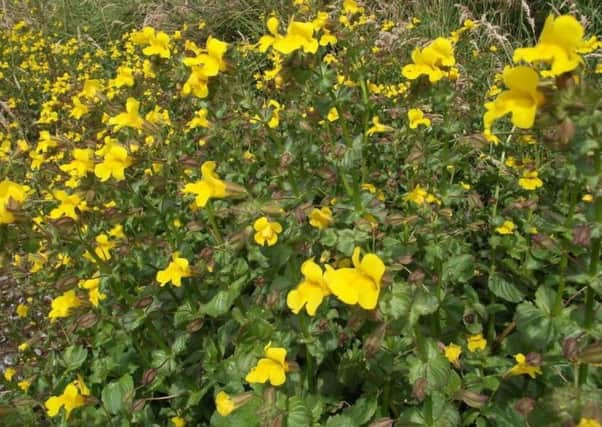Plant with strange name is seldom seen


Visiting Allerston on a gloriously sunny day, highlighted its village charms, and St John’s Church set back in a peaceful, green location. Beside the old mill-stream grew another plant with a strange name – Monkeyflower or Monkey Musk. It’s a flower seldom seen these days in the wild, alas.
It was introduced into British gardens in 1812 from an island off Alaska’s coast. When miles of canals opened, it spread along many wet areas, invading streams and marshes too. You could mistake it for a native! However, since my childhood days I’ve noticed a great decline due to land drainage.
Advertisement
Hide AdAdvertisement
Hide AdThe bright yellow flowers have intricately folded petals, which can make a flower resemble a grinning face. This gave Monkeyflower its common name. Its Latin name, ‘Mimulus’ means ‘little actor’, and its specific name ‘guttatus’ means ‘spotted’, referring to the tiny red spots which often appear on the flower. I’m sure you’ll find Mimulus guttatus in your local garden nursery.
Garden centres are now ablaze with colour, and Ruswarp’s was certainly no exception. The village is about two miles south west of Whitby, and following its River Esk soon leads to the cafe and nursery near Briggswath. It was heaving with enthusiasts, and there was every variety one could imagine! Monkeyflower planted by a garden stream or pond would be admirable.
Returning by way of Sleights, Iburndale and Ugglebarnby is always a popular alternative route home. Country lanes were awash with pink and white Dog Roses, and creamy-white umbels of Elder blossom. Elder has an amazing number of uses, if one considers its flowers, berries, leaves, wood, and pith. There is no part that hasn’t a value, and I must confess I’m longing to experiment with the fragrant flowers.
Descending from Suffield towards Hay Brow, one may discover an unusual plant we found on the outskirts of Scarborough many years ago. It remains unidentified. It’s about 6ft tall and each stem bears one flower, blue in colour, at the tip. This is characteristic of Salsify, but its leaves are not grass-like. Blue Sow Thistle has leaves we’d expect, but bears leafy ‘spikes’ of blue flowers! I sent a specimen to Kew’s Botanical Gardens, but all were baffled.